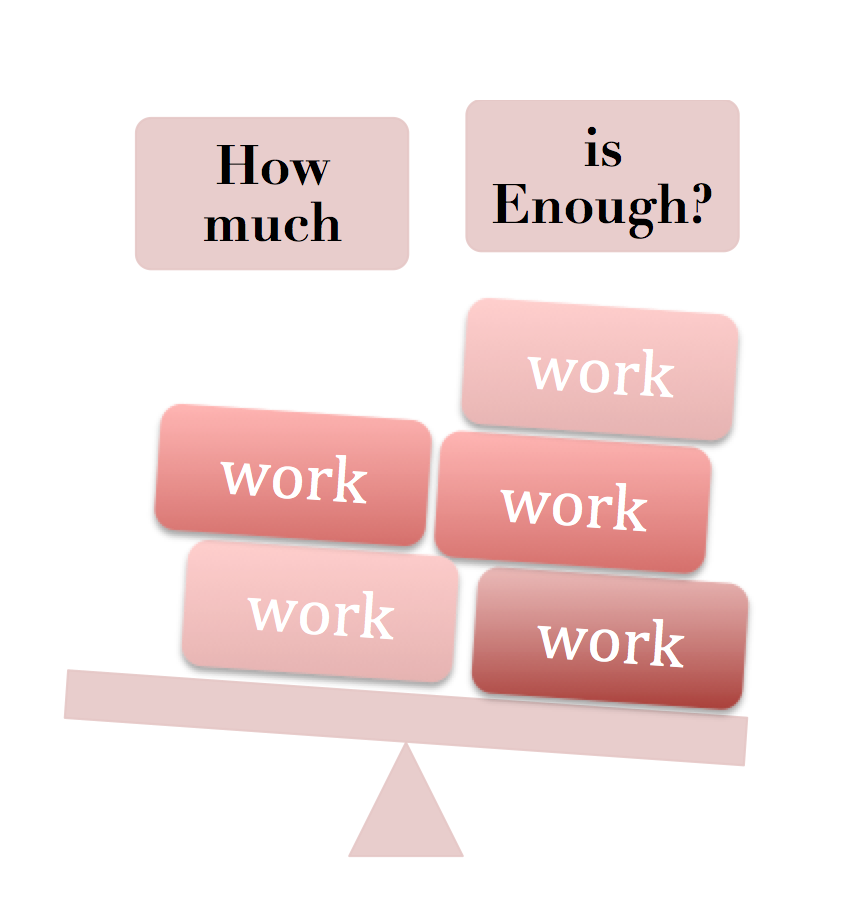How much (work) is enough?

Conventional wisdom defines business success largely by company size; the steeper the growth curve, the better. But is this model appropriate for freelancers? Most freelancers in publishing work independently; the amount of work we can accept is limited by the number of hours we can work and how many pages we can edit, proofread, or index per hour. For this reason, if we cultivate too many clients, we’re forced to turn down projects we’d like to accept. On the other hand, few freelancers have arrangements for receiving regular, predictable assignments from clients (say, editing each issue of a journal or preparing the annual index for a journal volume).
Hence, prudent freelancers may try to establish relationships with as many clients as possible, for much the same reason that airlines overbook flights: we hope in this way to avoid holes in our schedule that could keep us from meeting the bills. Yet if we get our names onto too many publishers’ lists, we’ll be forced to turn down offers of work—perhaps repeatedly. And we fear that saying no will discourage a publisher from calling on us again.
While most publishers seem to understand and accept occasional refusals, some do become discouraged when their offers of work meet with repeated refusals. And some publishers seem to have the bad luck to call only when a freelancer’s schedule is already full to overflowing!
Keeping the schedule full without overcommitting ourselves is one of the biggest challenges we face as freelancers. How well we meet that challenge affects both our income and the quality of our lives. If we don’t continually work to build our businesses, the loss of a client, for whatever reason, could be devastating. Consider, for example, the case of a small indexing firm that relied on steady work from a few important clients. When one of those clients decided to take its indexing in-house, the freelance firm was left struggling.
Yet if we attempt systematically to build our businesses by responding to advertisements, sending out query letters, and following up on contacts, we may be inviting overwork and stress. One freelance editor followed up on a lead provided by a friend. The initial contact with the publisher led to an offer of a manuscript that was due to be ready for editing in a few months. The editor tentatively accepted, but soon realized that her schedule was already filled with projects from established, important clients. Recognizing her limits, she reluctantly called the new client back and turned down the offer—aware that by so doing she risked losing the client.
How do we decide how much is enough? Is there any advantage to cultivating potential clients if the schedule is already full? How often can a freelancer expect to turn down a publisher before the client becomes discouraged and stops calling? Is the risk of losing a client justified by the need to keep schedules filled in the unpredictable world of book publishing?
Anne Gibbons, an editor and indexer in Tuscaloosa, Alabama, said, “When I first started freelancing, this advice was given me: Successful businesses don’t specialize in widgets or gizmos or even editing; they always specialize in solving problems. Translation: if you can’t take on the project (you’re too busy, it’s not your area of expertise, whatever), suggest another solution. Don’t just turn down the clients; help them solve their problems. This might mean suggesting the name of another freelancer (be sure you know the person has a reputation for doing good work) or an association that might supply names of freelancers. Or it might mean proposing an alternate schedule (‘I can’t take on the project now, but I’ll be able to in three weeks. I can then guarantee you x-day turnaround’).
“Being in the problem-solving business certainly isn’t a panacea for the perennial dilemma of ‘how much is enough?’ But it can be helpful. For example, you might call and ask, ‘Did you find someone for the project?’ That’s a legitimate reason for calling—and an excellent opportunity to remind the client/prospect that you’re still in business. If you provide names of other freelancers, they may return the favor someday; at the very least, you’ve strengthened a link in the ever-important network (and created some positive karma).”
For Jane Taylor of Merry Jane Editorial Services in Missoula, Montana, controlling the workload is a matter of establishing priorities. She says, “Four university presses supplied me with enough steady work to keep me busy for a year, and I had to turn down only a couple of jobs because of being too booked up. My personal philosophy is not to foster as many contacts as possible—I don’t like to have to say no too often because of being too busy. At the same time, I don’t pass up the opportunity to upgrade to publishers that (1) are my personal favorites and publish topics that truly interest me, (2) suit my personality (more organized than disorganized), (3) represent a career/prestige move, and (4) treat their freelancers well (sometimes difficult to determine ahead of time).”
A former university press staff editor, who is now a freelancer, favors working with only one or two publishers and sticking with them, provided they have enough work to satisfy a freelancer. She thinks managing editors appreciate knowing they can count on certain freelancers.
For my part, on one horrible day this past winter, I realized that I had somehow committed myself to editing seven books in the next month. Hurried, apologetic phone calls straightened out that mess, and once again I’ve vowed never, ever to get myself into another such predicament. On the other hand, a new client just called with a project that sounds intriguing. . . .
By Lys Ann Shore

